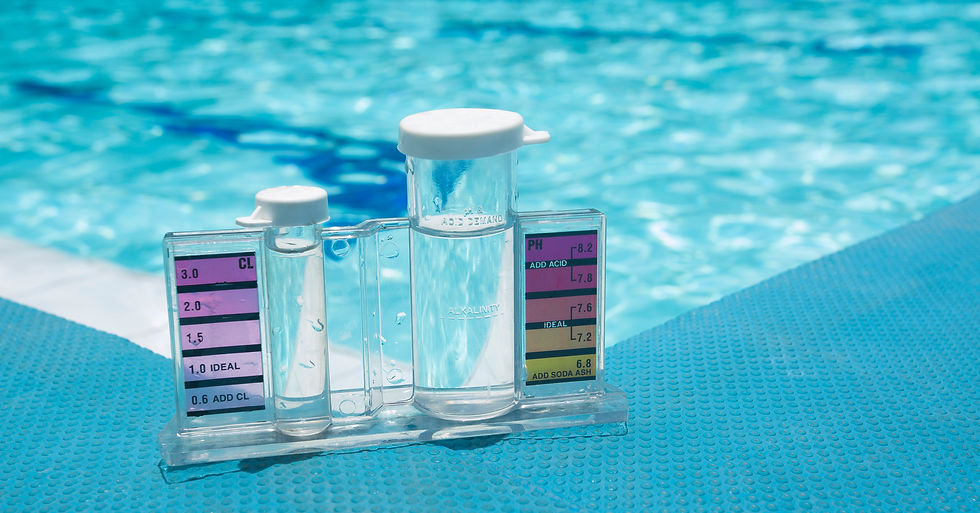"Dive into Balance: The Crucial Role of pH Levels in Pool Water"
- charliesworld17
- Mar 7, 2024
- 2 min read
Welcome to our pool maintenance blog, where we dive into the fundamentals of keeping your pool crystal clear and inviting. In this article, we'll explore the often-underestimated hero in pool chemistry - pH levels. Let's unravel the importance of maintaining the right pH balance and discover how simple adjustments can make a significant splash in your pool's health.
Understanding pH Levels:
1. What is pH?
pH is a measure of the acidity or alkalinity of water on a scale from 0 to 14. A pH of 7 is considered neutral, while values below 7 are acidic, and values above 7 are alkaline.
2. Ideal Pool pH Range:
The ideal pH range for pool water is typically between 7.2 and 7.8. This slightly alkaline range provides optimal conditions for chlorine effectiveness and swimmer comfort.
Importance of Maintaining Correct pH:
1. Chlorine Efficiency:
Proper pH levels enhance the effectiveness of chlorine. If pH is too high, chlorine becomes less active. If too low, it can be overly aggressive, leading to rapid dissipation.
2. Water Comfort:
Balanced pH ensures a comfortable swimming experience. Low pH can cause skin and eye irritation, while high pH may result in cloudy water and scaling.
3. Preventing Corrosion and Scale:
Maintaining the correct pH helps prevent corrosion of pool equipment and scaling on pool surfaces, extending the life of your investment.
Adjusting pH Levels:
1. pH Testing:
Regularly test your pool's pH using a reliable testing kit. Aim for testing at least twice a week, especially during heavy usage periods.
2. pH Increasers and Reducers:
Use pH increasers (sodium carbonate) to raise pH levels and pH reducers (sodium bisulfate or muriatic acid) to lower them. Follow product instructions carefully.
3. Gradual Adjustments:
Make gradual adjustments to avoid overshooting your target pH. Wait several hours between testing and adjusting.
4. Regular Monitoring:
Consistent monitoring and adjustments are key. Factors like rainfall, pool usage, and temperature can influence pH levels.
Conclusion:
Maintaining the correct pH level in your pool is like conducting a symphony of water chemistry, where each note contributes to the harmony of a clean and inviting swimming environment. Regular testing, thoughtful adjustments, and a balanced approach will keep your pool water sparkling, ensuring hours of enjoyment for you and your guests.
Dive in, stay balanced, and let the refreshing experience of a well-maintained pool become the hallmark of your aquatic haven.
For more tips on pool maintenance and water chemistry, stay tuned to our blog. Happy swimming!


Comments